Register to unlock your exclusive B2B prices and start shopping. Sign up now!
Phoenix Contact Charging cable E-Mobility
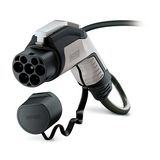
Order only
Phoenix Contact
EV-GBG3C-1AC16A-5,0M2,5ESBK01 - AC charging cable
140,63 €
per pcs
EAN: 4055626342801
MPN: 1627599
Box: 1
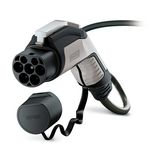
Order only
Phoenix Contact
EV-GBG3C-3AC16A-5,0M2,5ESBK01 - AC charging cable
169,29 €
per pcs
EAN: 4055626342818
MPN: 1627600
Box: 1
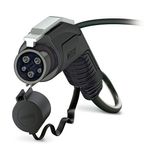
Order only
Phoenix Contact
EV-T1G3K-1AC32A-5,0M6,0ESBK11 - AC charging cable
175,42 €
per pcs
EAN: 4055626385389
MPN: 1628126
Box: 1

Order only
Phoenix Contact
EV-GBG4C-DC125A-6,0M35ESBK01
1 263,39 €
EAN: 4055626770628
MPN: 1073669
Package: 1
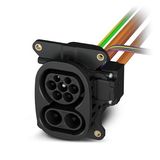
Order only
Phoenix Contact
CHARX T2HBI12-3AC32DC200-2,0M6 - Vehicle charging inlet
659,08 €
per pcs
EAN: 4063151515294
MPN: 1288395
Package: 1
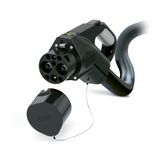
Order only
Phoenix Contact
EV-GBG4C-DC250A-6,0M70ESBK01
1 381,56 €
EAN: 4055626770697
MPN: 1073604
Package: 1
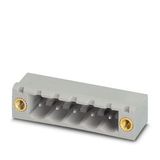
Order only
Phoenix Contact
BCH-508HF-16 BK
2,22 €
per pcs
Subtotal: 222,00 €
MOQ: 100
EAN: 4046356851978
MPN: 5452384
Package: 1

Order only
Phoenix Contact
EV-T2HPCC-DC400A-6,0M50ECBK11L - DC charging cable
4 427,88 €
per pcs
EAN: 4055626885476
MPN: 1087973
Package: 1

Order only
Phoenix Contact
EV-T2HPCC-DC400A-5,0M50ECBK11S - DC charging cable
4 196,59 €
per pcs
EAN: 4055626675275
MPN: 1052444
Box: 1
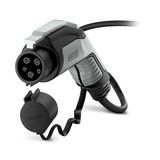
Order only
Phoenix Contact
EV-T1G2C-1AC32A-19FT10ASBK01 - AC charging cable
573,49 €
EAN: 4055626511061
MPN: 1020770
Package: 1

Order only
Phoenix Contact
EV-T2HPCC-DC400A-5,0M50ECBK11L - DC charging cable
4 196,59 €
per pcs
EAN: 4055626675787
MPN: 1052443
Package: 1

Order only
Phoenix Contact
CHARX T1HCI12-1AC48-2,0M1 - Vehicle charging inlet
207,26 €
per pcs
EAN: 4063151463229
MPN: 1271960
Package: 1

Order only
Phoenix Contact
CHARX T2HCI12-3AC32-2,0M2 - Vehicle charging inlet
233,85 €
per pcs
EAN: 4063151463182
MPN: 1271966
Box: 1
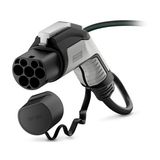
Order only
Phoenix Contact
EV-GBG3J-1AC32A-1,5M6,0ESBK01 - AC charging cable
679,87 €
EAN: 4055626385334
MPN: 1628116
Package: 1

Order only
Phoenix Contact
CHARX T2HBI12-3AC32DC200-3,0M6 - Vehicle charging inlet
767,90 €
per pcs
EAN: 4063151545079
MPN: 1300848
Package: 1

Order only
Phoenix Contact
EV-T1G2C-1AC80A-25FT6ASBK11T - AC charging cable
426,79 €
per pcs
EAN: 4063151471019
MPN: 1277166
Package: 1

Order only
Phoenix Contact
EV-T1HPCC-DC400A-5,0M50ECBK11S - DC charging cable
4 281,76 €
per pcs
EAN: 4055626673448
MPN: 1051693
Package: 1

Order only
Phoenix Contact
CHARX GBH4I-DC125-2,0M - Vehicle charging inlet
430,76 €
per pcs
EAN: 4063151463151
MPN: 1271834
Package: 1
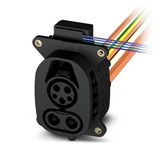
Order only
Phoenix Contact
CHARX T1HBI12-1AC80DC200-11M1 - Vehicle charging inlet
1 818,95 €
per pcs
EAN: 4063151798956
MPN: 1432238
Package: 1

Order only
Phoenix Contact
CHARX T1HBI12-DC200-3,0M1 - Vehicle charging inlet
675,78 €
per pcs
EAN: 4063151813710
MPN: 1436636
Box: 1

Order only
Phoenix Contact
CHARX T1HBI12-DC200-6,0M1 - Vehicle charging inlet
939,00 €
per pcs
EAN: 4063151741723
MPN: 1376683
Package: 1

Order only
Phoenix Contact
CHARX T2HBI12-3AC32DC200-8,0M2 - Vehicle charging inlet
1 410,89 €
per pcs
EAN: 4063151684709
MPN: 1356143
Package: 1

Order only
Phoenix Contact
CHARX T2HBI24-3AC32DC200-5,0M2 - Vehicle charging inlet
1 030,63 €
per pcs
EAN: 4063151789404
MPN: 1427757
Box: 1

Order only
Phoenix Contact
CHARX T2HBI12-DC200-4,0M2 - Vehicle charging inlet
768,21 €
per pcs
EAN: 4063151758448
MPN: 1383856
Package: 1

Order only
Phoenix Contact
CHARX T2HBI24-1AC32DC200-3,0M2 - Vehicle charging inlet
775,06 €
per pcs
EAN: 4063151712556
MPN: 1366772
Package: 1
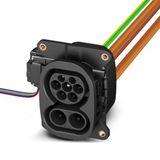
Order only
Phoenix Contact
CHARX T2HBI24-DC250-2,0M6 - Vehicle charging inlet
683,31 €
per pcs
EAN: 4063151781347
MPN: 1396634
Package: 1
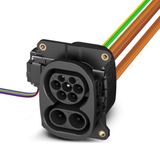
Order only
Phoenix Contact
CHARX T2HBI12-DC250-4,0M6 - Vehicle charging inlet
816,46 €
per pcs
EAN: 4063151789893
MPN: 1428622
Package: 1

Order only
Phoenix Contact
CHARX T2HBI24-1AC32DC250-2,0M2 - Vehicle charging inlet
739,06 €
per pcs
EAN: 4063151284169
MPN: 1211206
Box: 1
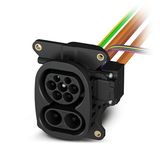
Order only
Phoenix Contact
CHARX T2HBI24-DC250-2,0M2 - Vehicle charging inlet
698,50 €
per pcs
EAN: 4063151284411
MPN: 1211220
Box: 1

Order only
Phoenix Contact
CHARX T2HBI24-3AC32DC250-2,0M2 - Vehicle charging inlet
757,83 €
per pcs
EAN: 4063151440084
MPN: 1270301
Box: 1
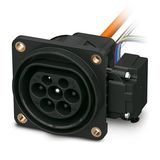
Order only
Phoenix Contact
CHARX T2HCI12-1AC32-2,0M2 - Vehicle charging inlet
194,28 €
per pcs
EAN: 4063151461294
MPN: 1271830
Box: 1

Order only
Phoenix Contact
CHARX T2HCI24-3AC32-2,0M2 - Vehicle charging inlet
268,57 €
per pcs
EAN: 4063151464004
MPN: 1271965
Box: 1
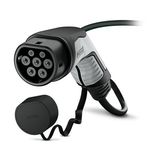
Order only
Phoenix Contact
EV-T2G3C-3AC32A-10,0M6,0ESBK01 - AC charging cable
222,44 €
per pcs
EAN: 4055626765716
MPN: 1072636
Box: 1
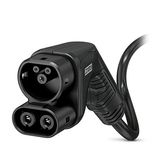
Order only
Phoenix Contact
EV-T2G4CC-DC40A-5,0M6,0ESBK11 - DC charging cable
191,46 €
per pcs
EAN: 4055626997186
MPN: 1106637
Box: 1

Order only
Phoenix Contact
EV-T2G3C-3AC32A-15,0M6,0ESBK01 - AC charging cable
263,27 €
per pcs
EAN: 4055626648927
MPN: 1047633
Box: 1

Order only
Phoenix Contact
EV-T1G3C-1AC30A-5,0M6,0JSBK11U - AC charging cable
178,84 €
per pcs
EAN: 4063151834784
MPN: 1449814
Package: 1

Order only
Phoenix Contact
RC-Z2232X
6,10 €
per pcs
Subtotal: 122,00 €
MOQ: 20
EAN: 4063151442361
MPN: 1241767
Package: 1

Order only
Phoenix Contact
CHARX T1HBI12-1AC80DC200-9,0M1 - Vehicle charging inlet
1 352,94 €
per pcs
EAN: 4063151838362
MPN: 1451907
Package: 1
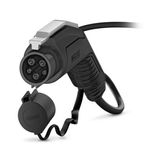
Order only
Phoenix Contact
EV-T1G3C-1AC30A-15,5M6JSBK11U - AC charging cable
308,31 €
per pcs
EAN: 4063151862985
MPN: 1467338
Package: 1
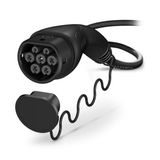
Order only
Phoenix Contact
CHARX ET2C-3AC20-6,5MES00P - AC charging cable
107,82 €
per pcs
Subtotal: 10 350,72 €
MOQ: 96
EAN: 4067923149526
MPN: 1630605
Package: 1
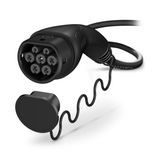
Order only
Phoenix Contact
CHARX ET2C-1AC32-6,5MES00P - AC charging cable
115,73 €
per pcs
Subtotal: 13 887,60 €
MOQ: 120
EAN: 4067923149328
MPN: 1630628
Package: 1

Order only
Phoenix Contact
CHARX PT2C-DC375-7,0MES00P1 - DC charging cable
2 038,90 €
per pcs
EAN: 4067923010314
MPN: 1538067
Package: 1
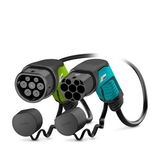
Order only
Phoenix Contact
EV-T2G3PC-3AC20A-5,0M-PXC4 - AC charging cable
189,57 €
per pcs
EAN: 4067923040014
MPN: 1559414
Package: 1

Order only
Phoenix Contact
CHARX T2HCI12-3AC32-3,0M2
284,98 €
per pcs
EAN: 4067923058606
MPN: 1570113
Package: 1

Order only
Phoenix Contact
CHARX ET2C-3AC32-5,0MES00P - AC charging cable
159,29 €
per pcs
Subtotal: 19 114,80 €
MOQ: 120
EAN: 4063151493103
MPN: 1285633
Package: 1

Order only
Phoenix Contact
CHARX ET2CP-3AC32-5,0MES00P - AC charging cable
202,44 €
per pcs
Subtotal: 24 292,80 €
MOQ: 120
EAN: 4063151492366
MPN: 1285622
Package: 1
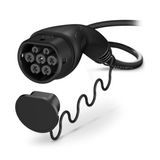
Order only
Phoenix Contact
CHARX ET2C-1AC32-5,0MES00P - AC charging cable
115,58 €
per pcs
Subtotal: 19 417,44 €
MOQ: 168
EAN: 4063151493318
MPN: 1285691
Package: 1
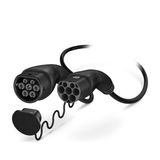
Order only
Phoenix Contact
CHARX ET2CP-1AC20-5,0MES00P - AC charging cable
113,10 €
per pcs
Subtotal: 56 550,00 €
MOQ: 500
EAN: 4063151493417
MPN: 1285694
Package: 1
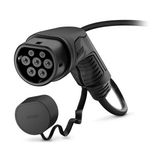
Order only
Phoenix Contact
EV-T2G3C-3AC20A-6,0M2,5ESBK31 - AC charging cable
139,50 €
per pcs
Subtotal: 27 900,00 €
MOQ: 200
EAN: 4063151839796
MPN: 1452515
Package: 1
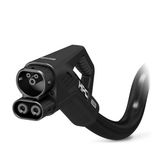
Order only
Phoenix Contact
CHARX PT2C-DC375-8,0MES00P - DC charging cable
1 959,86 €
per pcs
Subtotal: 19 598,60 €
MOQ: 10
EAN: 4067923000926
MPN: 1531908
Package: 1

Order only
Phoenix Contact
CHARX PT2C-DC375-7,5MES00P - DC charging cable
1 890,06 €
per pcs
Subtotal: 18 900,60 €
MOQ: 10
EAN: 4067923000421
MPN: 1531911
Package: 1
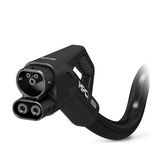
Order only
Phoenix Contact
CHARX PT2C-DC375-4,0MES00P - DC charging cable
1 425,02 €
per pcs
Subtotal: 14 250,20 €
MOQ: 10
EAN: 4067923000612
MPN: 1531919
Package: 1
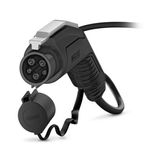
Order only
Phoenix Contact
EV-T1G2C-1AC40A-25FT10ASBK01 - AC charging cable
207,05 €
per pcs
EAN: 4063151978112
MPN: 1513808
Package: 1

Order only
Phoenix Contact
CHARX ET2C-3AC20-5,0MES00P1 - AC charging cable
148,27 €
per pcs
EAN: 4063151981839
MPN: 1518293
Package: 1

Order only
Phoenix Contact
EV-T1G2K-1AC32A-5,0M10ASBK01 - AC charging cable
192,94 €
per pcs
EAN: 4055626446509
MPN: 1628419
Box: 1
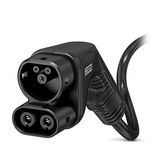
Order only
Phoenix Contact
EV-T2G4CC-DC80A-5,0M16ESBK11 - DC charging cable
259,84 €
per pcs
EAN: 4055626997476
MPN: 1106633
Box: 1

Order only
Phoenix Contact
EV-T2M4CC-DC80A-6,0M16ESBK11 - DC charging cable
412,48 €
per pcs
EAN: 4063151005115
MPN: 1106945
Box: 1

Order only
Phoenix Contact
EV-T2M4CC-DC80A-3,5M16ESBK11 - DC charging cable
358,42 €
per pcs
EAN: 4063151000271
MPN: 1106939
Box: 1
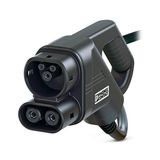
Order only
Phoenix Contact
EV-T2M4CC-DC80A-4,5M16ESBK11 - DC charging cable
379,62 €
per pcs
EAN: 4063151004972
MPN: 1106948
Box: 1

Order only
Phoenix Contact
EV-T2M4CC-DC200A-7,5M50ESBK11 - DC charging cable
767,84 €
per pcs
EAN: 4063151000547
MPN: 1106958
Box: 1
You’re not just buying a cable set. You’re designing uptime. This guide distills what matters when specifying Phoenix Contact e-mobility hardware for depot, workplace, retail, and highway charging.
System View: From Grid to Vehicle
- AC layer (Mode 3): Wallboxes and posts for 3.7–22 kW with Type 2 interfaces. Use Phoenix Contact AC charging solutions where duty cycles are long and maintenance windows are short.
- DC layer (Mode 4): 30–400+ kW cabinets and dispensers. Phoenix Contact DC charging systems (CCS) enable short dwell times and controlled thermal loads.
- Controls & comms: Controllers, PLC add-ons, metering, and network modules that bind OCPP backends, load management, and payment.
- EV side: Inlets and Phoenix Contact electric vehicle connectors (AC Type 2, DC CCS2) with options for high cycle life and harsh environments.
Standards & Interoperability You Should Lock In
- Connectors: IEC 62196 (Type 2, Combo 2/CCS2).
- Charging control: IEC 61851-1 (AC), 61851-23/-24 (DC).
- Vehicle communication: DIN 70121 and ISO 15118 (incl. Plug & Charge readiness).
- Backend: OCPP 1.6J minimum; plan for 2.0.1 in new builds.
Hardware Building Blocks (Typical BoM Buckets)
- EVSE controllers & I/O: PWM/PLC control, contactor drive, insulation monitoring hooks, metering inputs.
- Power path: AC contactors, DC contactors, relays, shunts/CTs, solid overcurrent protection.
- Connector sets:
- AC: Type 2 sockets, shutters, latch/lock kits, leads.
- DC: CCS2 vehicle cable/plug sets, straight/angled heads, optional liquid-cooling for >300 A.
- Cables & harnessing: UV/oil-resistant sheaths, low smoke, bend-radius compliant for dispensers and cable management booms.
- Edge comms: Ethernet, cellular gateways, RFID/reader modules, MID-grade metering.
- Accessories: Seals, caps, holsters, strain-relief, service kits.
This is where Phoenix Contact EV infrastructure components stand out: consistent pin plating, temperature sensing in DC pins, robust strain-relief, and serviceable wear parts.
AC vs DC: Practical Selection
- Workplace/fleet base load: AC, 11–22 kW. Low CapEx, distributed across stalls.
- Public fast turn: DC, 100–300 kW single or split cabinets. Cable cooling if >500 A peak.
- Mixed sites: AC for dwellers, a DC lane for turnaround vehicles. Shared transformer and dynamic load management.
Thermal & Mechanical Notes That Save Opex
- Connector temperature probes: Protects DC pins at high current; derate gracefully instead of tripping.
- Cable mass & ergonomics: For DC, specify assist systems (retractors/booms) to cut plug drops and strain.
- Ingress & UV: Outdoor posts and dispensers should meet the IP/UV baseline for coastal/industrial air.
- Cycle life: Size spare connector sets according to expected plug-ins/day × warranty horizon.
Communications and Payments
- OCPP profiles: Smart charging, reservations, firmware OTA.
- ISO 15118 / Plug & Charge: Budget for certificate management from day one, even if you enable later.
- Load management: Per-feeder balancing; coordinate with building EMS and tariff windows.
Procurement Checklist (Bulk/Frame Orders)
- Confirm connector family (Type 2, CCS2) and exact current class.
- Specify cable length, handle angle, and cooling option for DC.
- Lock controller firmware branch and OCPP version.
- Reserve service kits: seals, latch sets, holsters, strain-relief boots.
- Align metering class (MID) and calibration paperwork for audits.
- Define logistics: phased deliveries for site waves, DOA swap terms, and RMA path.
Typical Use-Case Presets
- Retail car park (dwell 1–3 h): 8–20 × AC 11–22 kW posts (Type 2), OCPP 1.6J, RFID + QR pay.
- Fleet depot (night dwell): AC rows + a pair of 150–200 kW DC for daytime peaks; connector holsters and rugged cable management.
- Highway node: 300–400 kW DC cabinets, CCS2 liquid-cooled sets, redundant comms, hot-swap connectors.
How This Maps to Your Page Keywords
Use cases above incorporate: phoenix contact e-mobility, phoenix contact EV charging solutions, phoenix contact charging technology, phoenix contact electric vehicle connectors, phoenix contact EV infrastructure components, phoenix contact DC charging systems, phoenix contact AC charging solutions—the actual building blocks you’ll be ordering.
Why Choose Bank of Lamps (Distributor)
- Engineering-led selection: We size Phoenix Contact charging technology to grid limits, cable runs, and duty cycles—before you commit to civil works.
- Predictable EU logistics: Single-warehouse flow with staged shipment plans for multi-site rollouts.
- B2B terms: Volume pricing, connector service kits on the same PO, advance spares to cap downtime.
- Documentation: Complete conformity packs and commissioning notes aligned to your OCPP backend and metering rules.
- Continuity: Replacement electric vehicle connectors and cable sets matched to your installed base for rapid field swaps.